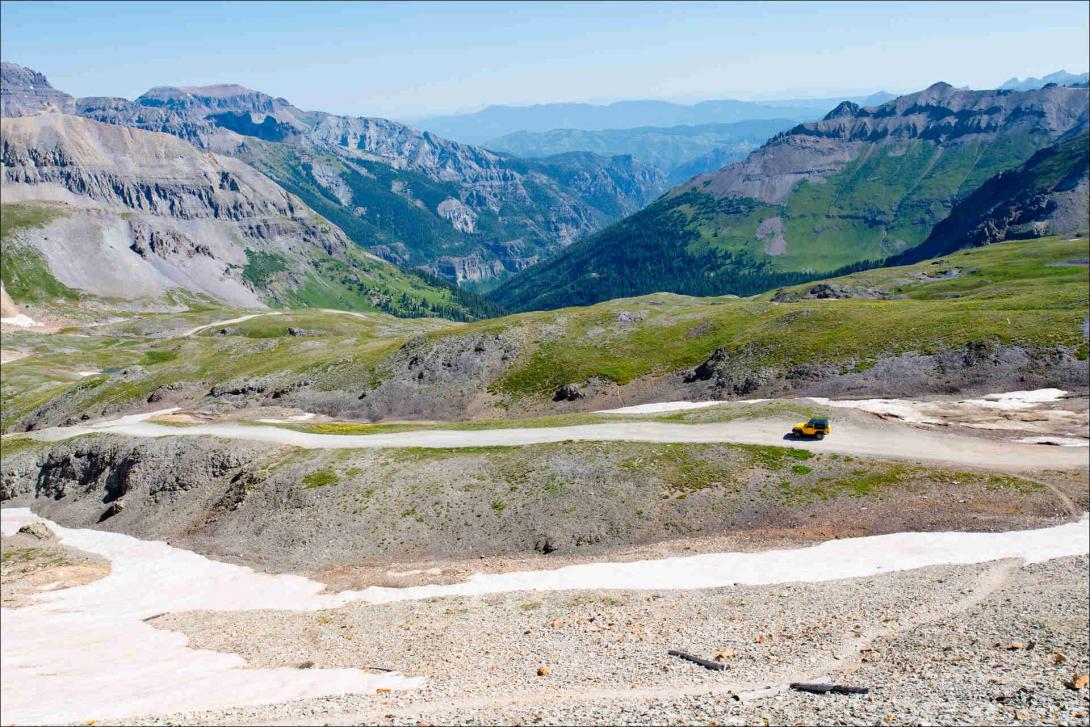Fort Peabody
Full Article
Built on Imogene Pass during the Western Federation of Miners strike in Telluride in 1903–4, Fort Peabody was a Colorado National Guard post intended to prevent deported union members and activists from returning to Telluride via the pass. Named after Governor James Peabody, who deployed the National Guard troops that helped local mine owners put down the strike, it was the highest sentry post ever built in the United States as well as the only post in Colorado built to exclude union members from a particular area. Possibly used by mine owners as late as 1908, the fort gradually deteriorated for a century before being restored in 2010 by San Miguel County and the US Forest Service.
Keeping Miners Out
Fort Peabody was built at the peak of several years of labor unrest in the mines of southwestern Colorado’s San Juan Mountains. By 1901 the Western Federation of Miners had gained enough strength in the region to hold a strike at Telluride’s Smuggler-Union Mine. The strike was called off, but tensions continued to escalate, with mine manager Arthur Collins assassinated at his home in November 1902. Collins’s replacement, Bulkeley Wells, soon led local mine owners to organize against the union.
In September 1903, local mine employees went on strike to get an eight-hour day for mill workers. The Mine Operators Association called on Governor James Peabody for assistance, and Peabody obliged by sending in National Guard troops to allow the mine owners to operate their mines with nonunion labor. Initially fed and housed by the mine owners, the National Guard essentially became the mine owners’ personal military force. Martial law was declared and union members were deported, with sentries stationed at the county’s borders to keep out the deported men.
In January 1904, Smuggler-Union manager Wells became a captain in the National Guard, and he gained command of the district in late February. The winter was not snowy enough to block the high passes connecting Telluride to the union strongholds of Ouray and San Juan Counties, so Wells ordered the construction of a sentry post at Imogene Pass. Located at 13,365 feet on the ridge slightly southeast of the actual pass, the installation consisted of a small wooden guardhouse protected by stone walls, a stone flag mount that may have briefly housed a rapid-fire Colt machine gun, and another small stone enclosure that could have protected a sniper. Named Fort Peabody after the governor, the post also had phone service to Telluride so the sentries could alert Wells if anyone made it over the pass.
Two or three men from Wells’s unit occupied Fort Peabody from at least February 21 to June 15, 1904, when martial law ended in Telluride. By that time the mine owners were fully in control, their mines and mills back to business as usual. In November the union called off its strike, signaling that its strength had been broken. It is possible that Wells’s troops continued to occupy the fort until 1905, when their service ended, and there are even reports that Wells staffed the fort with mine employees as late as 1908 to monitor traffic over the pass.
Recent Restoration
After 1908, Fort Peabody was no longer occupied, and by 1910 it had become an attraction for tourists who made their way to the top of Imogene Pass. Over the twentieth century, the fort was battered by high winds and heavy snows but never received any stabilization or restoration, because of its remote location. By the 1950s, the road to Imogene Pass had become a rough jeep track, making the site even more difficult to access, but at that time Fort Peabody’s guardhouse, flagpole mount, and sniper nest remained intact.
By 2004, when the fort turned 100 years old, the guardhouse’s roof beam had fallen and several walls were collapsing. The next year the fort was listed on the National Register of Historic Places, and by 2007 local officials were starting to discuss whether and how to restore the structure. Some thought the fort should remain a ruin, some thought it should be stabilized to prevent further deterioration, and others wanted to see it fully restored.
In the summer of 2010, the San Miguel County Open Space and Recreation Department stabilized and partially rebuilt Fort Peabody under the direction of the US Forest Service, which administers the land where the fort is located. Funded by the county’s Open Space and Recreation Fund, the project involved excavating the guardhouse interior and rebuilding its floor, walls, and roof using a mix of original and new materials. The restoration crew found many artifacts at the site, including ammunition shells, pieces of leather, glass fragments, a hair pin, a piece of old newspaper, coal, and a fire poker. The restored fort is accessible to visitors via a short trail from Imogene Pass.












